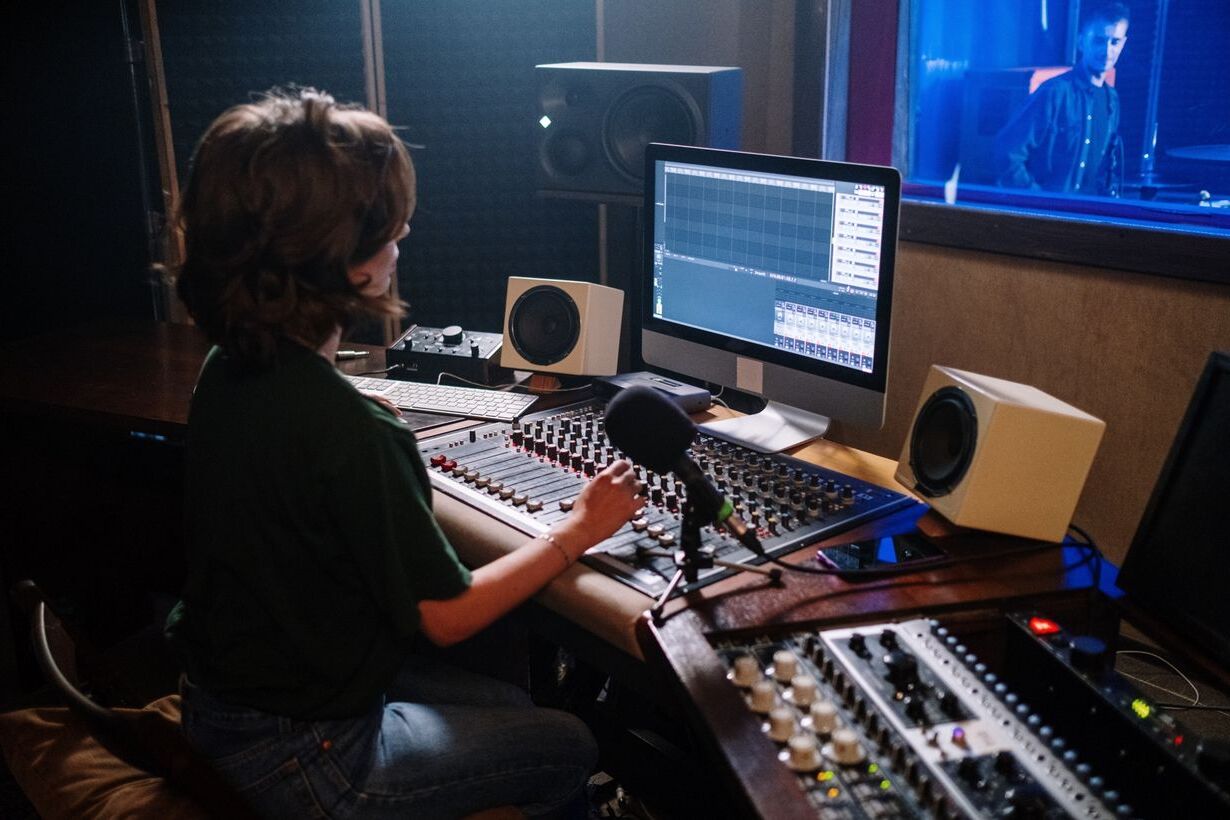
Sound design is everywhere, from the movies we watch to the video games we play. But what exactly is it? Sound design is the art of creating audio for various media, including film, television, theater, and video games. It involves recording, manipulating, and mixing sounds to enhance the storytelling experience. Whether it's the roar of a dragon, the hum of a spaceship, or the subtle rustle of leaves, sound designers craft these auditory elements to make scenes more immersive. Ever wondered how they do it? Let's dive into 28 fascinating facts about sound design that will give you a new appreciation for this incredible craft.
What is Sound Design?
Sound design is the art of creating audio elements for various media. This includes movies, TV shows, video games, and even live performances. Sound designers use a mix of recorded and synthesized sounds to craft an immersive auditory experience.
- Sound design involves creating audio for films, TV, video games, and live performances.
- It combines recorded and synthesized sounds to create a unique auditory experience.
- Sound designers often work closely with directors and producers to achieve the desired soundscape.
The History of Sound Design
Sound design has a rich history that dates back to the early days of cinema. Understanding its evolution helps appreciate the complexity and creativity involved in this field.
- The term "sound design" was first used in the 1970s by Walter Murch.
- Early sound design in cinema relied heavily on live sound effects and music.
- The introduction of synchronized sound in the late 1920s revolutionized the industry.
- "Star Wars" (1977) is often cited as a landmark in modern sound design.
Tools and Techniques
Sound designers use a variety of tools and techniques to create their masterpieces. These range from traditional instruments to cutting-edge software.
- Digital Audio Workstations (DAWs) are essential tools for modern sound designers.
- Foley is a technique where everyday sounds are recreated in a studio to match on-screen actions.
- Field recording involves capturing sounds from real-world environments.
- Synthesizers are used to create unique, electronic sounds.
- Sound libraries offer pre-recorded sounds that can be used in various projects.
The Role of a Sound Designer
A sound designer's role is multifaceted, involving creativity, technical skills, and collaboration. They are responsible for the overall soundscape of a project.
- Sound designers often start by reading the script to understand the project's needs.
- They create a sound plan, outlining the types of sounds required.
- Collaboration with directors and other team members is crucial for achieving the desired outcome.
- Sound designers also handle the mixing and mastering of audio tracks.
Famous Sound Designers
Several sound designers have made significant contributions to the field, earning recognition and awards for their work.
- Walter Murch is a pioneer in the field, known for his work on "Apocalypse Now."
- Ben Burtt created iconic sounds for "Star Wars," including the lightsaber hum.
- Gary Rydstrom has won multiple Oscars for his work on films like "Jurassic Park" and "Saving Private Ryan."
- Randy Thom is known for his work on "The Incredibles" and "Forrest Gump."
Sound Design in Video Games
Sound design plays a crucial role in video games, enhancing the player's experience and immersion.
- Video game sound design includes creating ambient sounds, character voices, and sound effects.
- Interactive audio systems allow sounds to change based on the player's actions.
- Games like "The Last of Us" and "Red Dead Redemption 2" are praised for their exceptional sound design.
- Sound designers often work with composers to create a cohesive audio experience.
The Future of Sound Design
The field of sound design is continually evolving, with new technologies and techniques emerging regularly.
- Virtual reality (VR) and augmented reality (AR) are pushing the boundaries of sound design.
- Artificial intelligence (AI) is being used to create more realistic and dynamic soundscapes.
- Spatial audio technology allows for a more immersive listening experience.
- The demand for high-quality sound design is increasing as media consumption grows.
Sound design is a fascinating and ever-evolving field that plays a crucial role in modern media. From its historical roots to the latest technological advancements, sound design continues to captivate and enhance our auditory experiences.
The Final Note on Sound Design
Sound design shapes our experiences in ways we often overlook. From the roar of a T-Rex in movies to the chirping of birds in video games, these crafted sounds bring stories to life. Sound designers use a mix of creativity and technology to create these auditory wonders. They record, edit, and mix sounds to evoke emotions and enhance storytelling. Whether it's the subtle hum of a spaceship or the crash of waves, each sound is meticulously crafted. Next time you watch a movie or play a game, take a moment to appreciate the soundscape. It’s not just background noise; it’s a vital part of the experience. Sound design is an art form that deserves recognition for its role in making our favorite media so immersive and memorable.
Was this page helpful?
Our commitment to delivering trustworthy and engaging content is at the heart of what we do. Each fact on our site is contributed by real users like you, bringing a wealth of diverse insights and information. To ensure the highest standards of accuracy and reliability, our dedicated editors meticulously review each submission. This process guarantees that the facts we share are not only fascinating but also credible. Trust in our commitment to quality and authenticity as you explore and learn with us.
